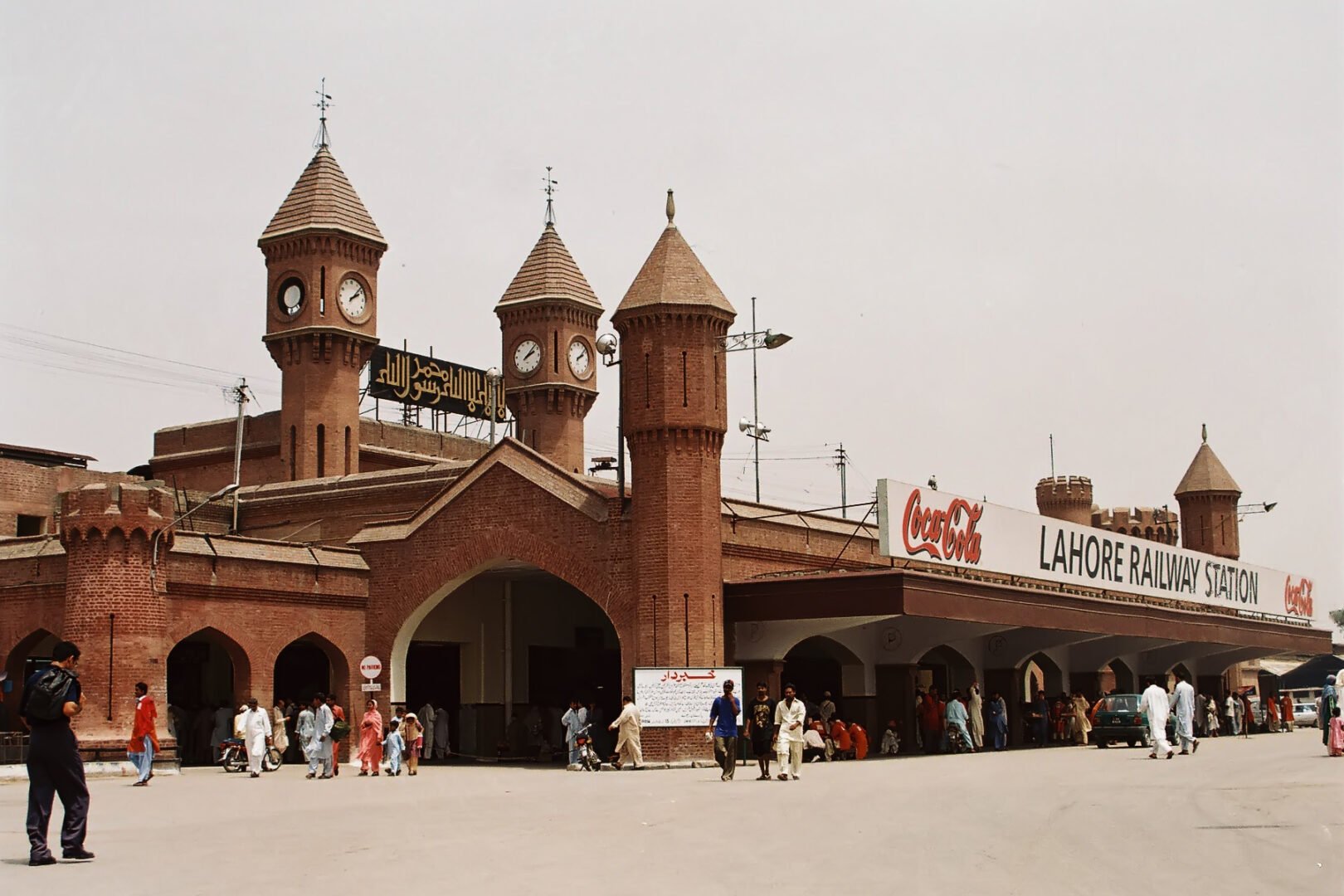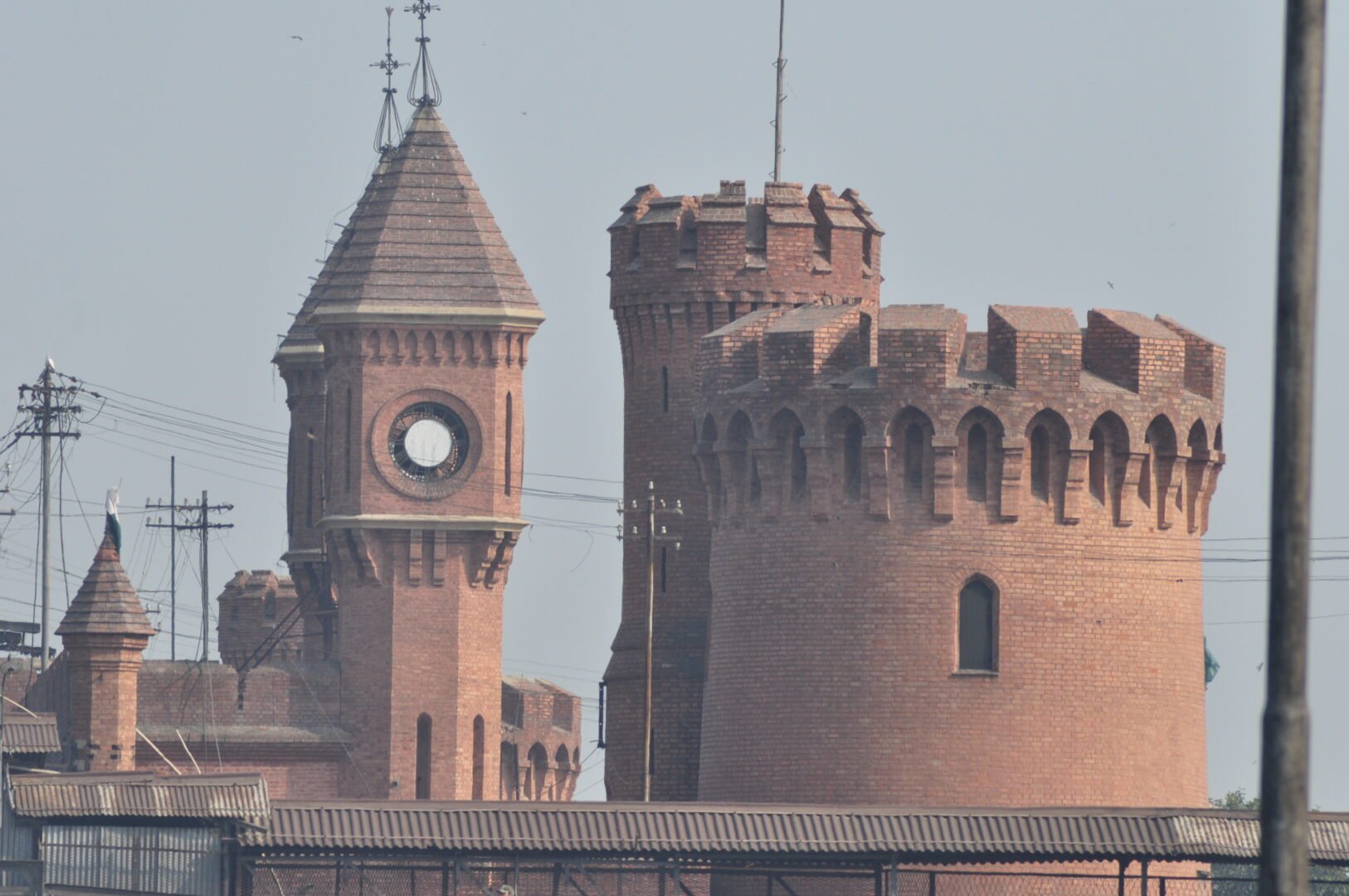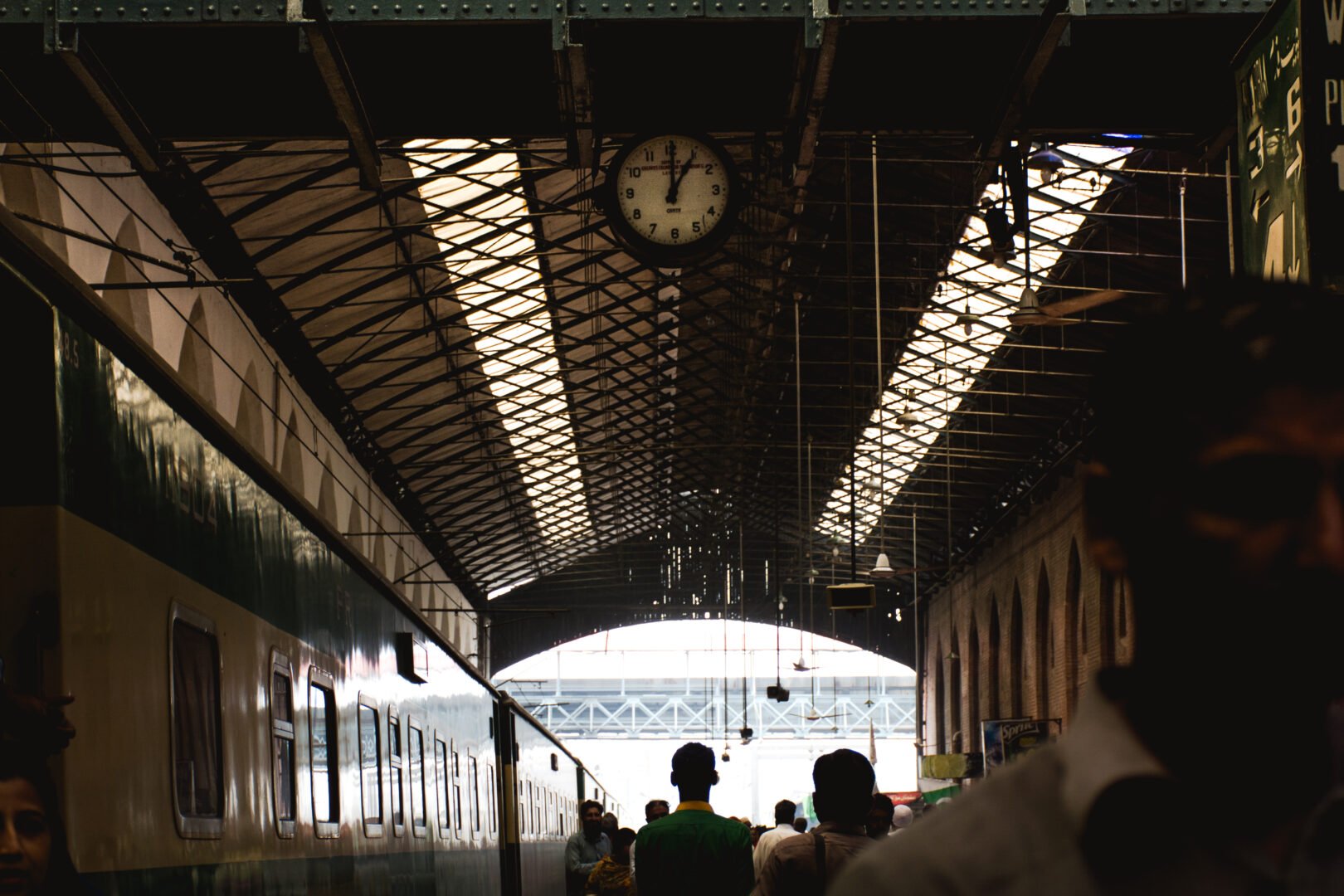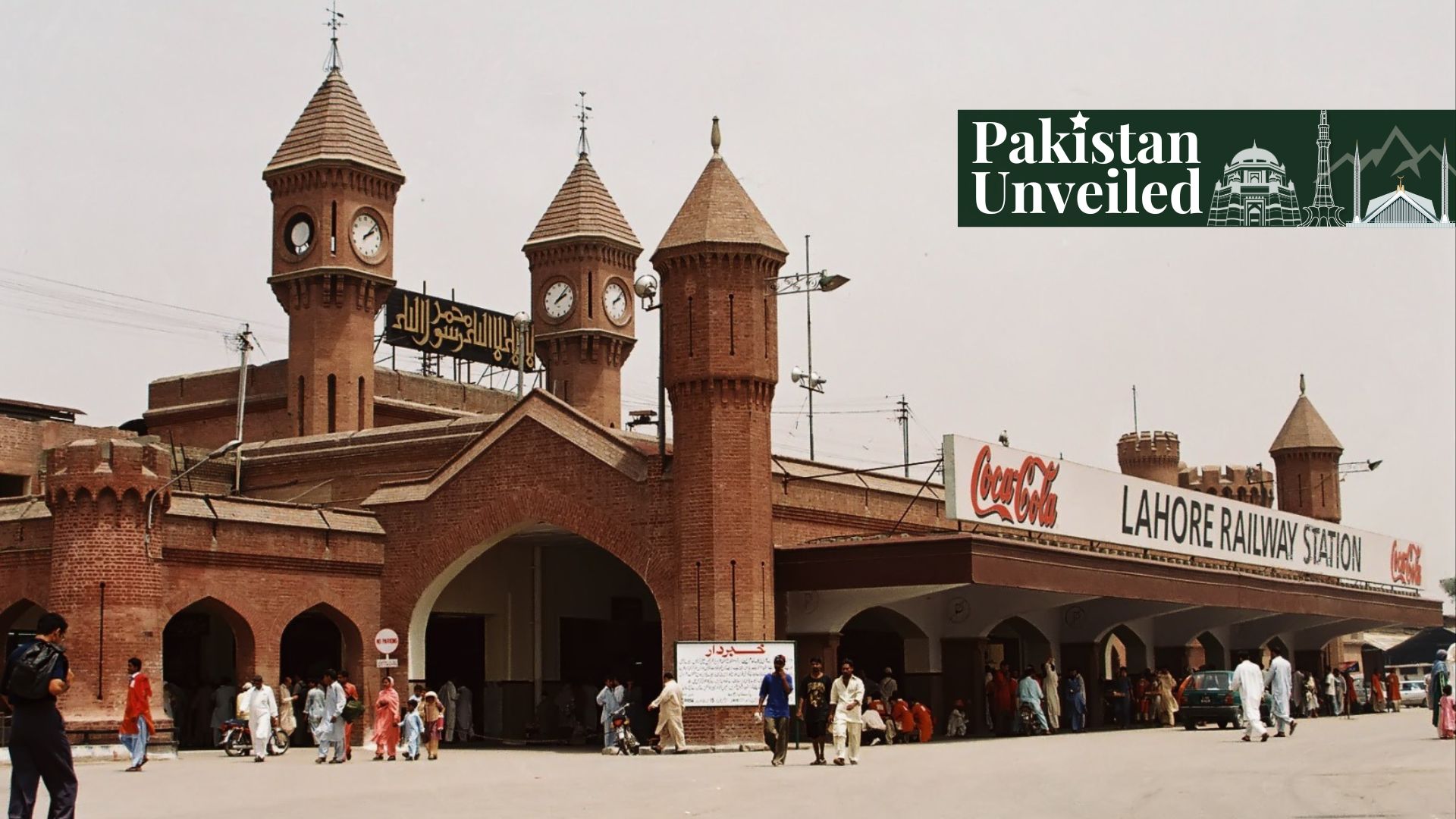Pakistan is enriched in cultural diversity with the maintenance and preservation of forts, monuments, palaces, and sundry historical buildings that it inherited from the colonial subcontinent. The Lahore Junction Railway Station is one of them, reflecting cultural heritage with its unique architecture and colonial history. Before the partition of the subcontinent, during the British Raj, it served as one of the headquarters of the railway along with being the northern terminal of the Scinde, Punjab, & Delhi railways.

In addition, its location is significant in understanding its role in colonial history. For instance, the railway station is positioned in the heart of the walled city of Lahore. Along with serving as a thoroughfare station on Main Line 1 (ML1), the Lahore station was built as the largest railway station in the country.

History of the Station
While the Industrial Revolution was dawning along with many technological breakthroughs, the invention of steam engines brought to light the idea of introducing roads and railway networks. In the Indian subcontinent, the idea to lay railway tracks in Lahore was first introduced in a letter written from the civil engineer’s office on February 3, 1853, in the Lahore Chronicle newspaper. He proposed to lay a single line of rails on one side of the Grand Trunk Road from Lahore to Amritsar while reserving the remaining width of the road for ordinary traffic.
After deducting maintenance costs, this would produce a surplus income of 267,932 rupees. Additionally, the length of the line was estimated to be 36 miles. Yet, it took several years to finalize the project. On July 15, 1857, Chief Engineer William Brunton presented the architectural designs to the Scinde Railway Company. In his report, he mentioned his aim to generate revenue from native people who would later utilize the facility. He deemed Lahore, Multan, and Amritsar as strategic locations for laying stations that would offer maximum goods traffic and passengers.

However, the 1857 Sepoy Mutiny against the British dealt a heavy blow to the design of the railway. Consequently, they proposed to build it in cantonments. Later, it was decided to construct the railway station in the most fortified place. This time, greater emphasis was placed on strategic, defensible positioning, population density, and land quality. The bedrock was laid by Sir John Lawrence in 1859, the lieutenant governor of Punjab, with a Latin motto, “tam bello, quam pace,” meaning “both in war and peace.” It was built by Mohammad Sultan Chughtai, a contractor for the Public Works Department. By the end of 1861, a total of 109.75 miles of railway line had been constructed.
The Design
The station holds its indispensability due to its medieval period structure. Since security became a massive concern during the post-1857 mutiny, it was built to be surrounded by thick walls, turrets, and massive holes to counter potential future uprisings against the British Empire. This was meant to direct gun and cannon fire as a form of retribution in conflicts. Additionally, it was intended to protect the railway staff and others in any time of danger.

Furthermore, it was constructed with brick masonry and features square turrets that rise above the main building. The clocks are embedded in the turrets, which provide a bird’s-eye view. This was meant to emphasize the importance of punctuality for the people. These are highly prevalent norms promoted by industrialized England with alacrity among its people.
The station also served as a linchpin in making Lahore a railway junction when the first train was set for Amritsar in 1860. Later, when railway connections were laid to Bombay, Calcutta, Peshawar, and Karachi in 1889, Lahore played a critical role in making Karachi the largest wheat exporter by transporting wheat from Punjab’s canal colonies. Additionally, during the Second Anglo-Afghan War in 1878, Lahore was crucial for military logistics, handling the movement of 75 trains every 24 hours to transport troops and supplies to the war front.
Moreover, the design is predicated on the “head house” concept, with the main building comprising key facilities mainly ticket counters, waiting areas, restrooms, and other passenger services located at the front of the station. From the building, passengers gain access to the platforms via walkways or concourses that lead them to overhead steel bridges or underpasses. These bridges or passages allow them to cross over or under the tracks safely.

Shops and other amenities are often placed along the walls or sides of the building. This assists in maximizing space and convenience for travelers. In order to protect the station from any change that might alter the character of the building, it is protected under the Punjab Special Premises Preservation Ordinance (1985). Even after the independence, both Pakistan and India ensured that the station remained functional.
This was one of those stations that was immensely impacted by the bloodshed that happened when the passengers were offloaded from the trains coming towards Pakistan. After independence, the 8,124 km of railway tracks were retained by Pakistan. Additionally, the popular bi-weekly Samjhota Express used to travel to Attari, Amritsar until it was shut down owing to the revocation of Article 370 of Jammu and Kashmir.
One cannot deny the role of convoluted railway networks in bringing modern infrastructure to the subcontinent. The Lahore Railway Station has been an epicenter of connectivity breakthroughs in the pre-and post-independence era. Still, it has the potential to connect the people of both India and Pakistan. We can keep our fingers crossed that it will assist in denting the animosity between both countries down the road.
If you want to submit your articles, research papers, and book reviews, please check the Submissions page.
The views and opinions expressed in this article/paper are the author’s own and do not necessarily reflect the editorial position of Paradigm Shift.
Qirat Mirza is currently pursuing her bachelor’s degree in international relations from International Islamic University Islamabad. She is also a writer for Modern Diplomacy, International Affairs Forum, Pakistan Today, KIIR, CISS AJK, and Pak Observer. Recently, she completed a six-week internship at the Kashmir Institute of International Relations and the Inter-Services Public Relations (ISPR) to foster her academic insights and gain practical experience.



